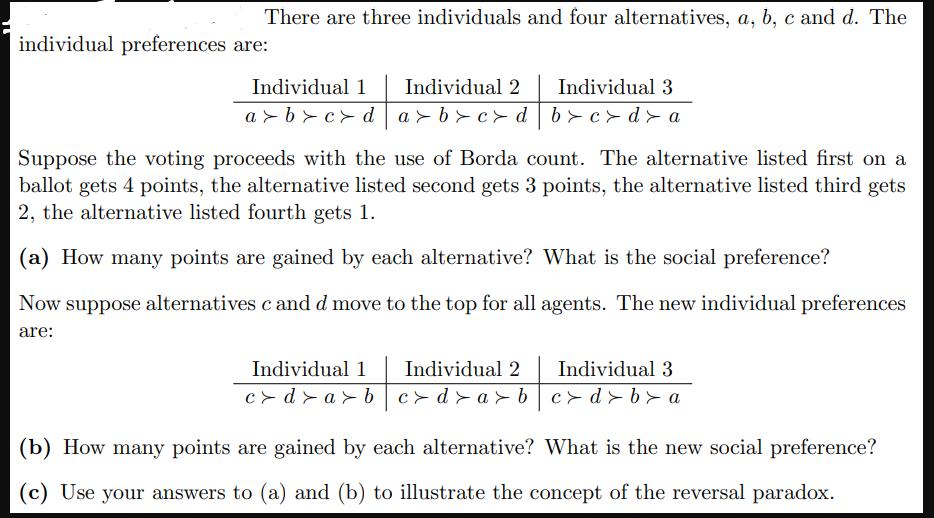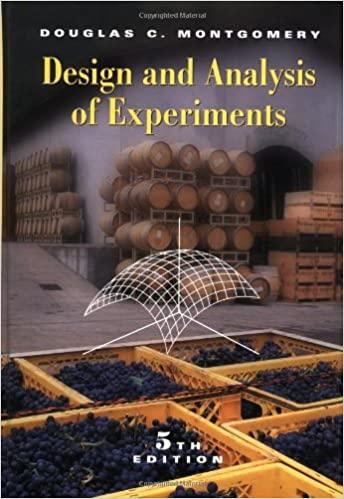Answered step by step
Verified Expert Solution
Question
1 Approved Answer
There are three individuals and four alternatives, a, b, c and d. The individual preferences are: Individual 1 Individual 2 Individual 3 a> b>c>d

There are three individuals and four alternatives, a, b, c and d. The individual preferences are: Individual 1 Individual 2 Individual 3 a> b>c>d a> b>c>d b>c>d> a | Suppose the voting proceeds with the use of Borda count. The alternative listed first on a ballot gets 4 points, the alternative listed second gets 3 points, the alternative listed third gets 2, the alternative listed fourth gets 1. (a) How many points are gained by each alternative? What is the social preference? Now suppose alternatives c and d move to the top for all agents. The new individual preferences are: Individual 1 Individual 2 c>d>abc>d>a>b|c>d>b>a Individual 3 (b) How many points are gained by each alternative? What is the new social preference? (c) Use your answers to (a) and (b) to illustrate the concept of the reversal paradox.
Step by Step Solution
★★★★★
3.50 Rating (153 Votes )
There are 3 Steps involved in it
Step: 1

Get Instant Access to Expert-Tailored Solutions
See step-by-step solutions with expert insights and AI powered tools for academic success
Step: 2

Step: 3

Ace Your Homework with AI
Get the answers you need in no time with our AI-driven, step-by-step assistance
Get Started


